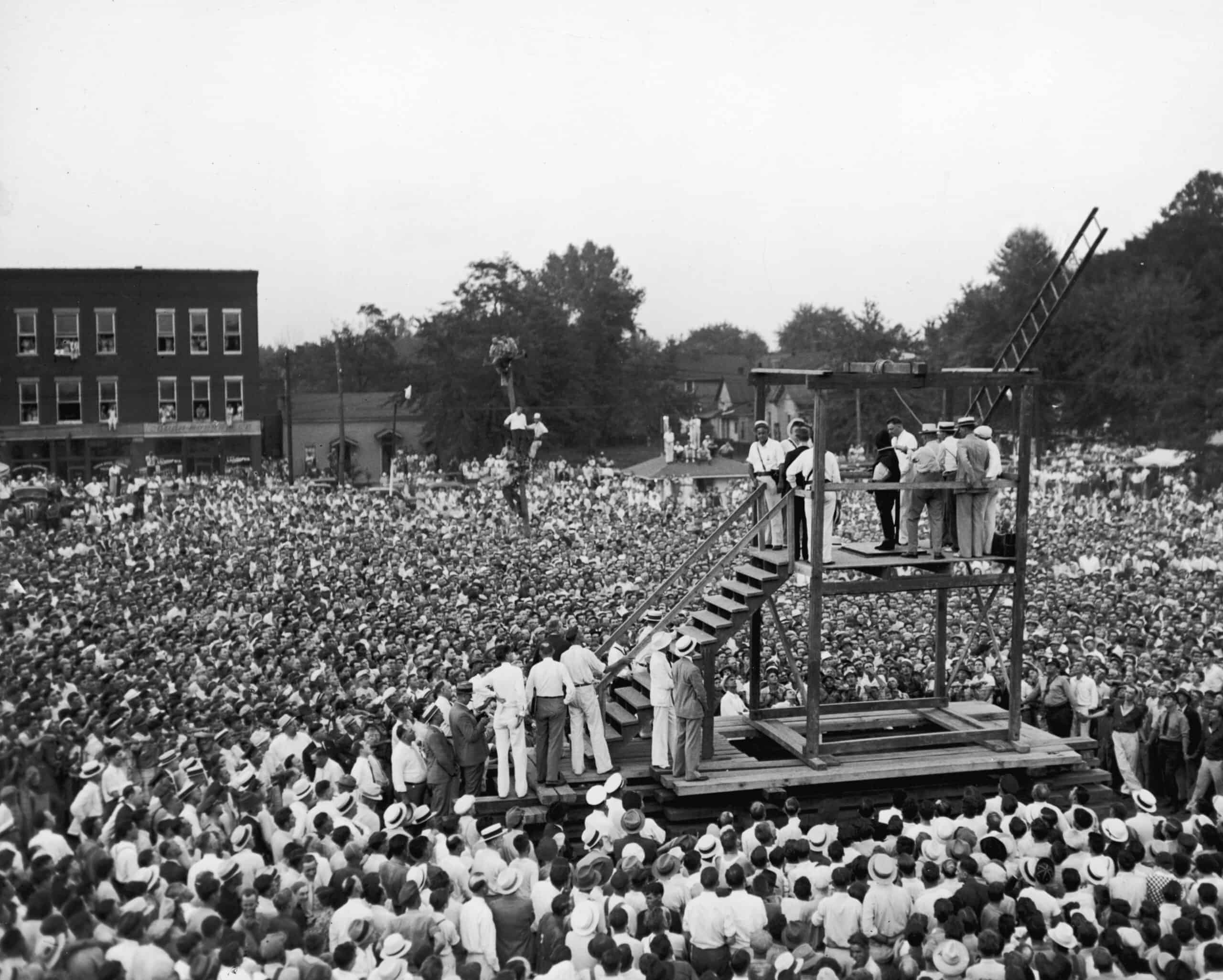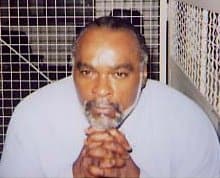There are currently 2,331 people on death row in the United States, according to the Death Penalty Information Center. The death penalty is legal in 27 states and remains permitted under federal law. Although lethal injection is now the primary mode of execution, five states still allow death by firing squad.
Until the 1890s, the most common method of execution was hanging. The electric chair, which was invented in 1888 as a more humane way of administering the death penalty, eventually took over as the preferred method until lethal injection became more prevalent.
Public executions were common in the 19th century, but a 1936 Kentucky hanging – which attracted national media and a crowd of over 20,000 people – became such an embarrassing spectacle that many states put an end to public viewing. Still, media coverage of the events surrounding executions, including who the witnesses are and what takes place inside the chamber, is common.
To determine the most high-profile executions in American history, 24/7 Tempo referred to numerous news and historical sources, as well as the Death Penalty Information Center, a nonprofit that provides data and analysis on capital punishment. We focused on executions that were either widely publicized or highly contested, with many of those put to death being notorious criminals.
In the cases of some of those executed, including Richard Hauptmann, who was convicted of killing the Lindbergh baby, and the Italian anarchists Sacco and Vanzetti, who were accused of committing murder during a robbery, their guilt is still heavily debated among historians and scholars. This is the most infamous criminal from every state.
Here are the most high-profile executions in American history:
Nathan Hale
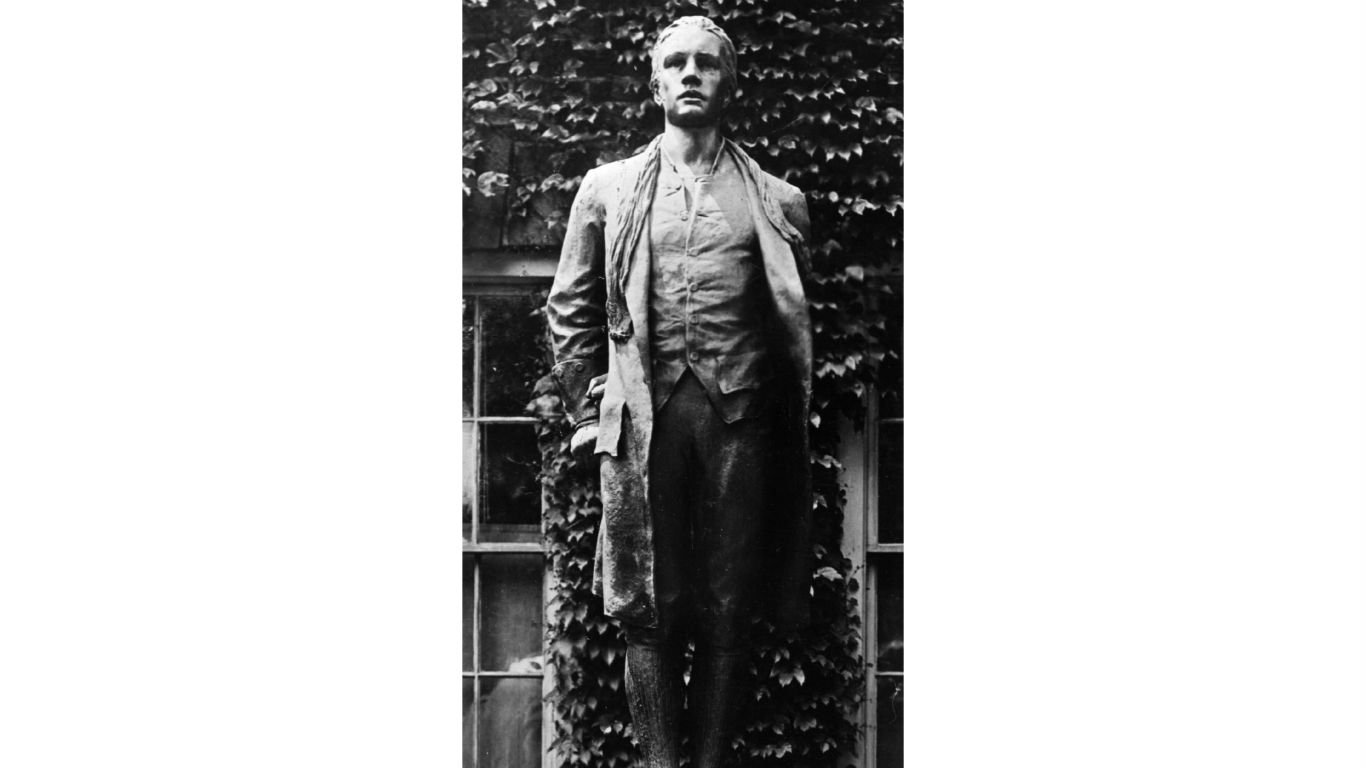
Killed at age 22, Nathan Hale is remembered as an American patriot.
Killed at age 22, Nathan Hale is remembered as an American patriot.
- Executed: September 22, 1776
- Means: hanging
During the American Revolution, Connecticut native Nathan Hale was sent to gather intelligence on the British while serving in the Continental Army. He was captured behind enemy lines and executed in Manhattan as a spy, with his last speech reportedly including the line, “I only regret that I have but one life to lose for my country.”
John Brown
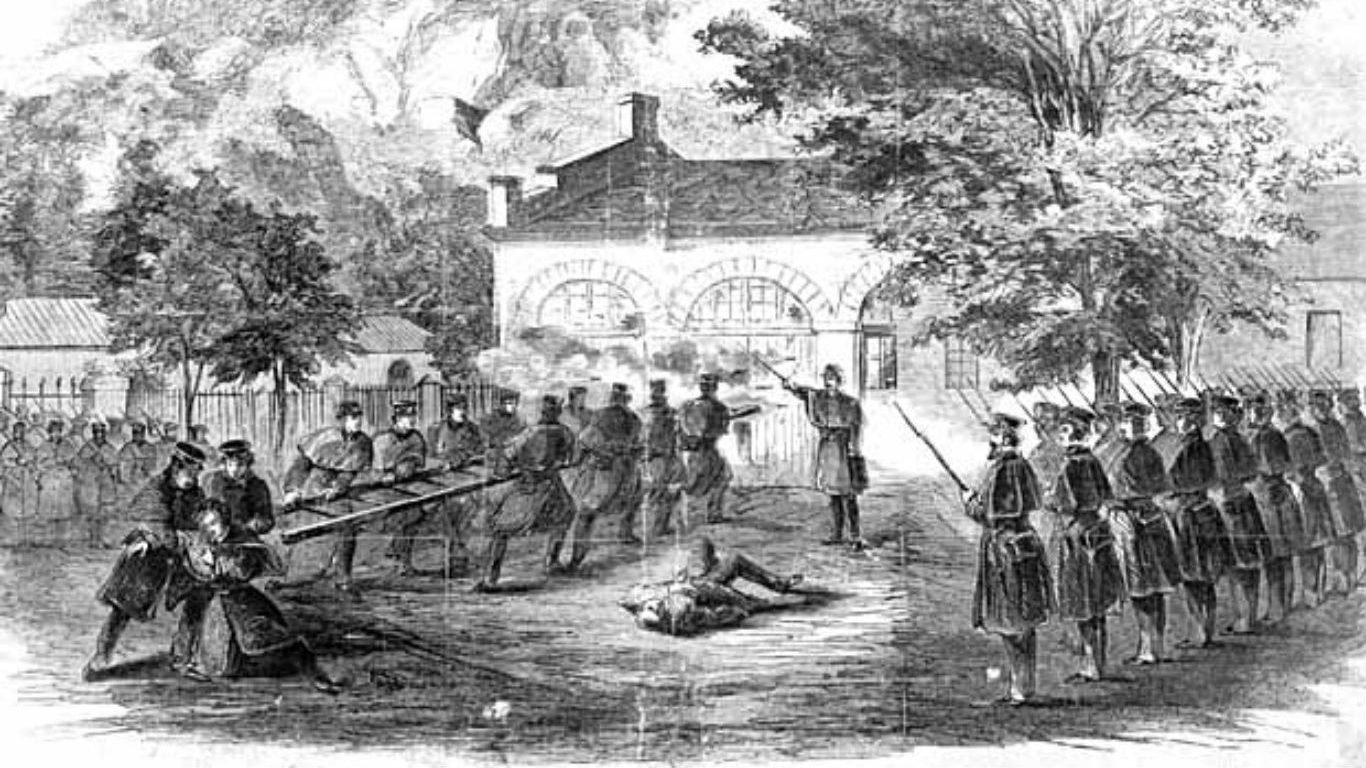
John Brown was a prominent abolitionist before the Civil War.
- Executed: December 2, 1859
- Means: hanging
After running a stop on the Underground Railroad and fighting in Bleeding Kansas, abolitionist John Brown led the famous raid on the Harpers Ferry Armory with the intention of starting a slave revolt. The raid failed and Brown was executed for treason in Virginia.
38 Dakota men
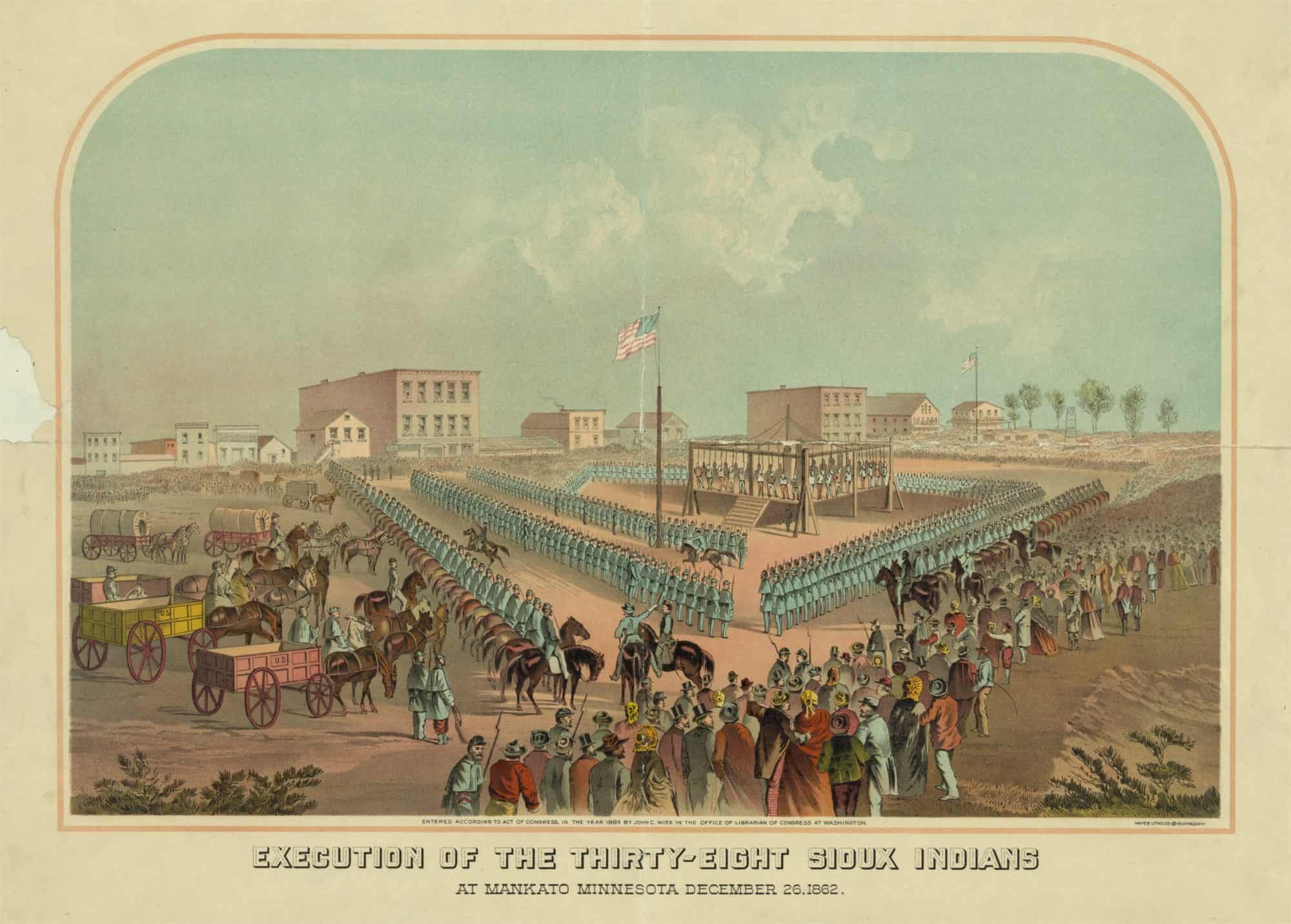
The largest mass execution in U.S. history occurred the day after Christmas in 1862.
The largest mass execution in U.S. history occurred the day after Christmas in 1862.
- Executed: December 26, 1862
- Means: hanging
After the Dakota War of 1862, a military commission sentenced 303 surrendered Dakota men to death. President Lincoln commuted all but 38 sentences, and those 38 men were hanged in the largest mass execution in U.S. history. It was later discovered that two of the men were killed in error – one who had been acquitted, and one in a case of mistaken identity.
Mary Surratt

Mary Surratt owned a boardinghouse frequented by Confederate sympathizers.
Mary Surratt owned a boardinghouse frequented by Confederate sympathizers.
- Executed: July 7, 1865
- Means: hanging
Maryland native Mary Surratt owned a Washington, D.C. boardinghouse frequented by John Wilkes Boothe and other co-conspirators in the Lincoln assassination. She was implicated in the conspiracy and despite insisting on her innocence, was found guilty and became the first woman executed by the U.S. federal government.
Charles J. Guiteau
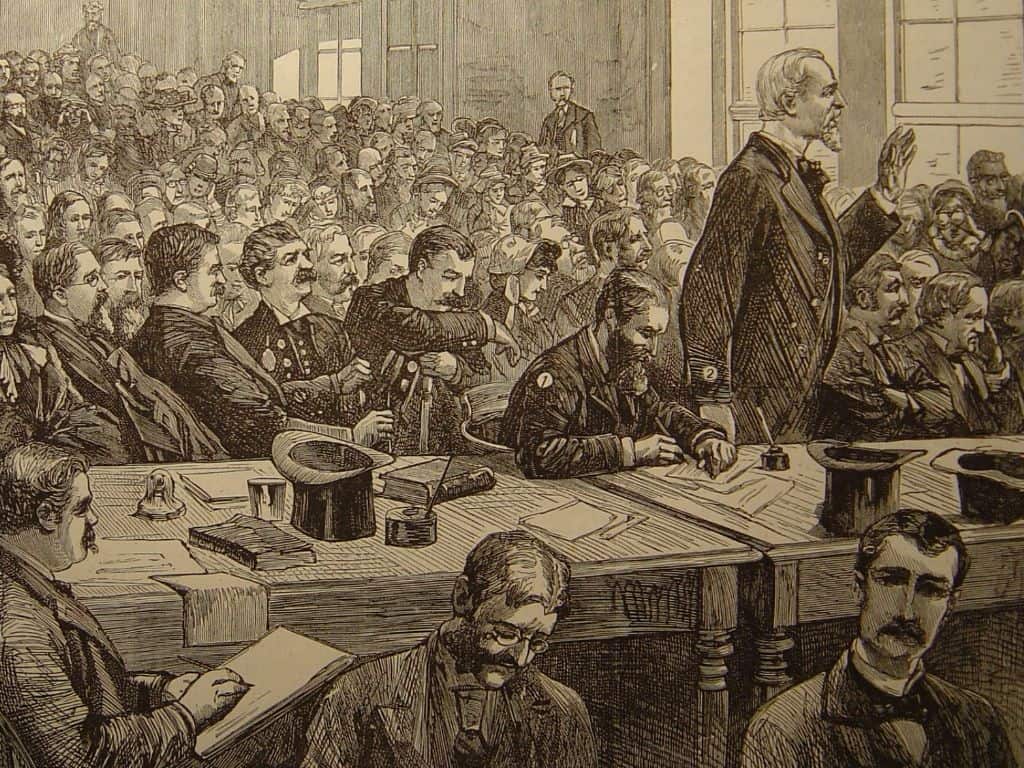
Guiteau's trial was a media sensation.
Guiteau’s trial was a media sensation due to his bizarre behavior.
- Executed: June 30, 1882
- Means: hanging
A destitute lawyer with delusions of grandeur, Charles Guiteau believed that a speech he wrote was integral to James A. Garfield’s presidential victory. When Guiteau wasn’t awarded with a consulship, he shot the new president, who died 11 weeks later. Guiteau pleaded innocent by reason of temporary insanity. Throughout the trial, he cursed at others in the courtroom and recited his testimony in poetry. He was convicted of murder and executed five months later.
Leon Frank Czolgosz
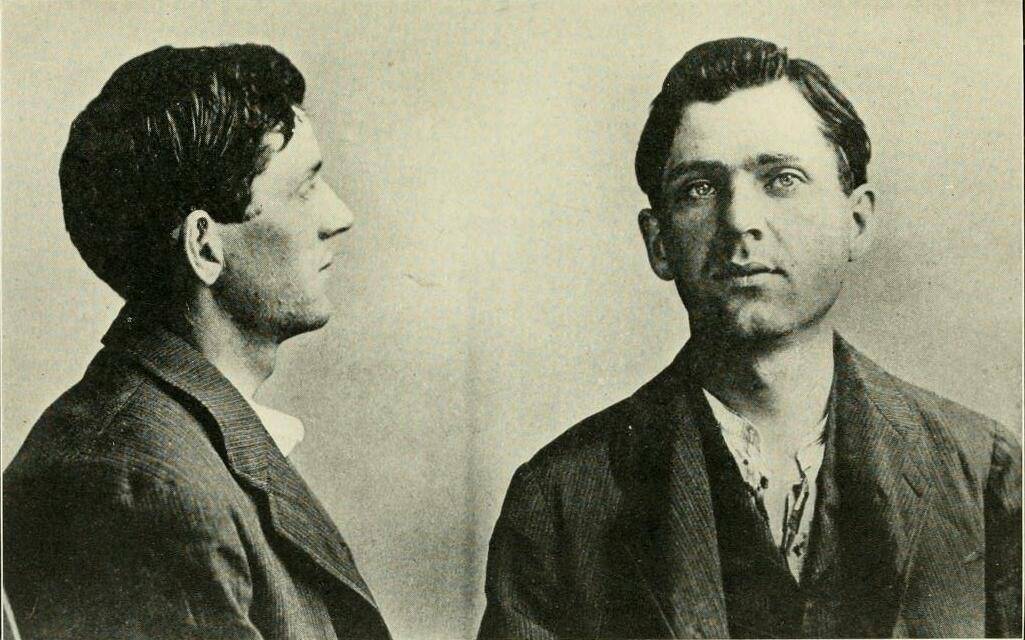
Anarchist Leon Czolgosz assassinated President McKinley because he believed it would help working class Americans.
Anarchist Leon Czolgosz assassinated President McKinley because he believed it would help working class Americans.
- Executed: October 29, 1901
- Means: electric chair
Inspired by the assassination of the Italian king Umberto I by anarchist Gaetano Bresci, anarchist Leon Czolgosz traveled to Buffalo, New York and shot President William McKinley as he greeted the public at the Pan-American Exposition. Although the judge presiding over his case entered a not guilty plea on his behalf, Czolgosz attempted to plead guilty and refused to speak with his defense team. He was convicted of murder and sentenced to death by the electric chair.
Sacco and Vanzetti

Italian immigrants Nicola Sacco and Bartolomeo Vanzetti were convicted of murder in a highly controversial case.
Italian immigrants Bartolomeo Vanzetti (left) and Nicola Sacco (right) were convicted of robbery and murder in a highly controversial case.
- Executed: August 23, 1927
- Means: electric chair
After a robbery in which two men were killed while transporting payroll funds, Italian anarchists Nicola Sacco and Bartolomeo Vanzetti were tried for the murders. Although many historians agree that Sacco at least had something to do with the robbery, the men’s trial and appeals process were marked by bias against Italians, immigrants, and anarchists. Despite worldwide outcries and protests, as well as a confession from another criminal, the two were executed seven years after the robbery.
Harry Pierpont
Harry Pierpont hid out in this Chicago apartment building with John Dillinger and associates in 1933.
- Executed: October 17, 1934
- Means: electric chair
A mentor to John Dillinger, Harry Pierpont led numerous bank robberies and jailbreaks across the Midwest and famously broke Dillinger out of jail. He was arrested for the last time while hiding out in Tucson, Arizona, and sentenced to death. He made multiple escape attempts, the last leaving him riddled with bullet wounds and so maimed that he had to be carried to the electric chair on the day of his execution.
Raymond Hamilton
Raymond Hamilton was incarcerated at the Texas State Penitentiary.
- Executed: May 10, 1935
- Means: electric chair
Once a member of Bonnie and Clyde’s infamous Barrow Gang, Raymond Hamilton was involved in the murder of an Oklahoma deputy, had broken out of jail multiple times, and had amassed a prison sentence of 362 years by the time he was executed at 20 years old in Huntsville, Texas.
Albert Fish

Albert Fish claimed to have had 100 victims.
Albert Fish claimed to have had 100 victims.
- Executed: January 16, 1936
- Means: electric chair
Also known as the Gray Man, the Brooklyn Vampire, and many other nicknames, Albert Fish was a cannibal, serial killer, and pedophile who preyed on young adults and children, especially those with intellectual disabilities. Although he was suspected in at least ten murders and claimed to have assaulted 100 children, he was convicted of only one murder before being executed.
Bruno Richard Hauptmann
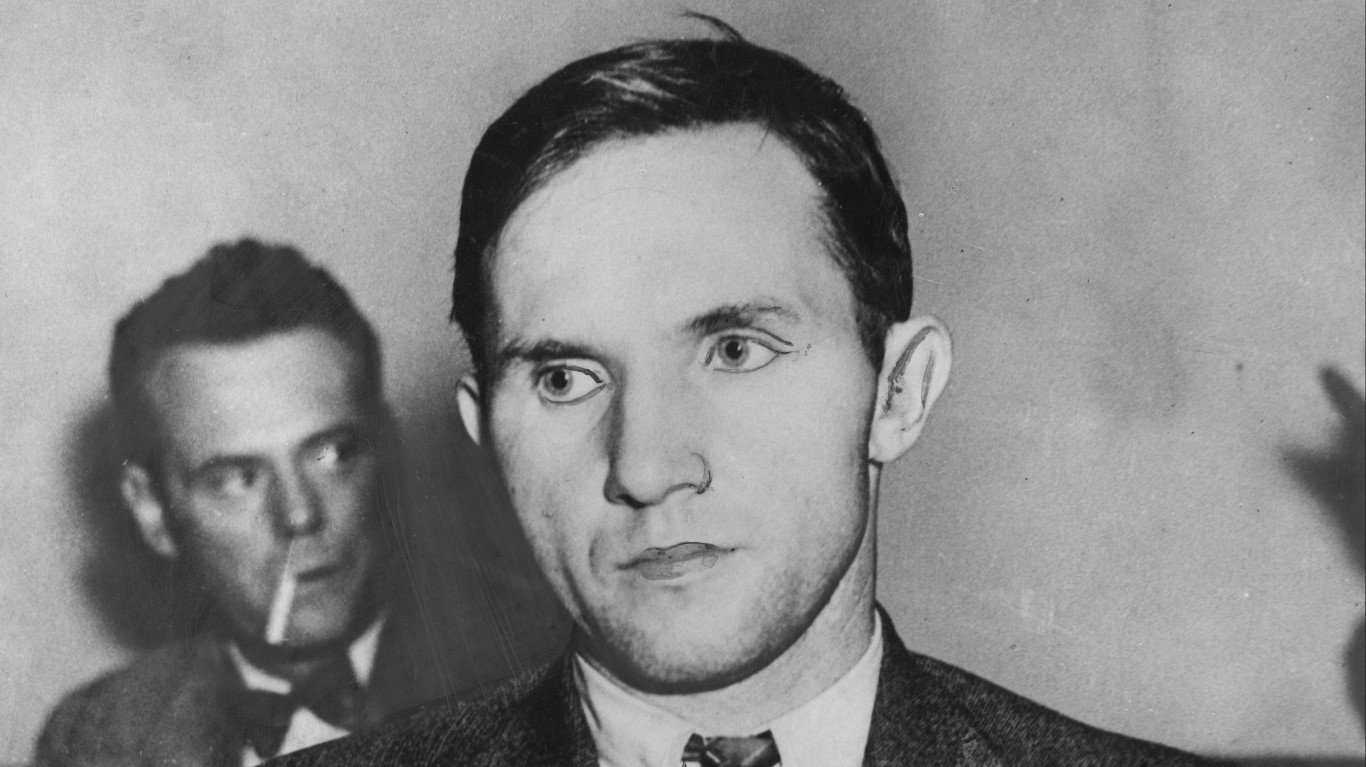
Richard Hauptmann insisted on his innocence.
Richard Hauptmann insisted on his innocence.
- Executed: April 3, 1936
- Means: electric chair
The kidnapping for ransom of aviator Charles Lindbergh’s baby was known as the “crime of the century” during its time. Although the thieves collected the ransom, the 20 month old child was eventually found dead in the woods near his family’s estate. German immigrant Richard Hauptmann was found with some of the ransom money and convicted of murder. Historians continue to debate his guilt to this day.
Rainey Bethea

- Executed: August 14, 1936
- Means: hanging
After confessing to the sexual assault and murder of a 70 year old woman, Rainey Bethea became the last person publicly executed in the United States. The sheriff presiding over the execution was a woman, and the national media and 20,000 people flocked to see a woman execute a man. The spectacle caused Kentucky to put an end to public executions, with other states soon following.
Eddie Slovik
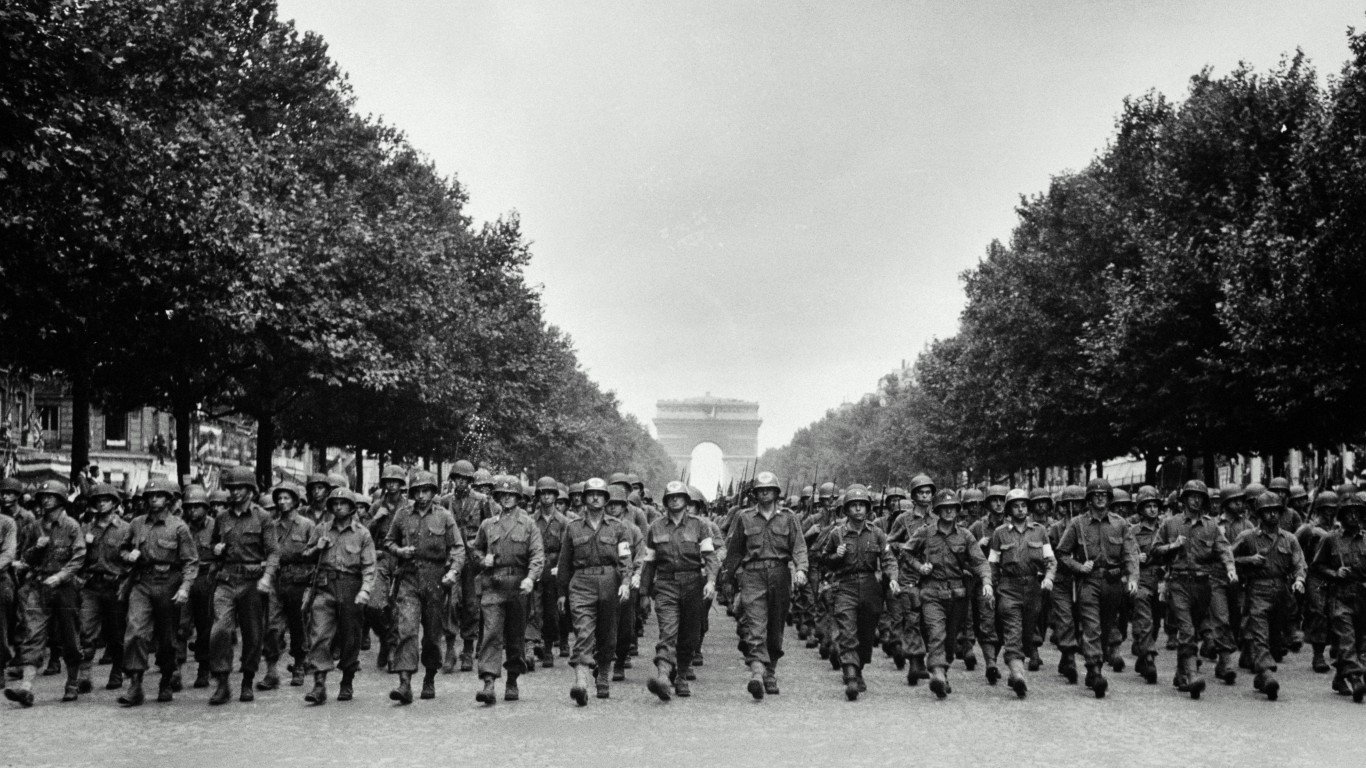
In October 1944, Private Eddie Slovik deserted his Army unit in France.
In October 1944, Private Eddie Slovik deserted his Army unit in France.
- Executed: January 31, 1945
- Means: firing squad
Afraid of being on the front lines in German-occupied France, 24 year old Eddie Slovik deserted his platoon. Despite being given multiple chances to return to his unit, he refused and was court-martialed for desertion. He was the first U.S. soldier executed for desertion since the Civil War, and the only one executed during WWII for this reason, despite over 20,000 other soldiers being sentenced for desertion.
Julius and Ethel Rosenberg

Ethel and Julius Rosenberg became the first Americans executed by the federal government for espionage.
Ethel and Julius Rosenberg became the first Americans executed by the federal government for espionage.
- Executed: June 19, 1953
- Means: electric chair
Julius and Ethel Rosenberg were convicted of spying for the Soviet Union in the ‘40s as part of a group that leaked atomic bomb diagrams. While Ethel and her brother were likely responsible for recruiting Julius, who served as a courier, Ethel’s role as a spy remains unclear. Prosecutors later admitted to pushing the death penalty on Ethel to coerce her husband into confessing his crimes and giving up the names of other conspirators.
Jack Gilbert Graham

The wreckage of United Airlines Flight 629 was brought to a warehouse to be examined by investigators.
The wreckage of United Airlines Flight 629 was brought to a warehouse to be examined by investigators.
- Executed: January 11, 1957
- Means: gas chamber
In an effort to murder his mother and cash in on life insurance claims, 23 year old Jack Gilbert Graham planted a bomb in his mother’s suitcase before she boarded to plane in Denver bound for Alaska. Minutes after departure, the bomb exploded near Longmont Colorado, killing all 44 people aboard. Graham eventually confessed, and his trial was the first in the Nation that allowed television cameras to record the proceedings.
Charles Starkweather
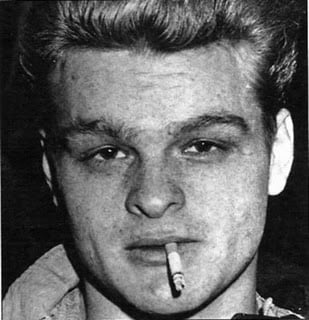
- Executed: June 25, 1959
- Means: electric chair
Accompanied by his 14 year old girlfriend, Caril Ann Fugate – who may or may not have been a hostage – Charles Starkweather went on a killing spree in Nebraska and Wyoming, murdering 10 people, including Fugate’s parents and young sister. Starkweather and Fugate were both convicted of murder, and their story has inspired songs and films including Oliver Stone’s “Natural Born Killers.”
Gary Gilmore

- Executed: January 17, 1977
- Means: firing squad
After a 1972 Supreme Court decision deemed capital punishment unconstitutional, all death sentences were delayed. However, in 1976, the court ended the ban. Gary Gilmore, who had been found guilty of murdering two college students in Utah, was the first person executed in the U.S. after the death penalty was reinstated. With the options of hanging or firing squad, Gilmore chose a firing squad, and even tried to commit suicide twice while awaiting his execution.
Ted Bundy
In the days leading up to his execution, Ted Bundy confessed to the murders of 36 girls and women.
- Executed: January 24, 1989
- Means: electric chair
Targeting mostly college students and young women, this infamous serial killer murdered at least 30 people. Bundy was known to lure women to his car by asking them for help or by posing as a police officer before abducting and sexually assaulting them, then strangling or bludgeoning them to death. He decapitated some victims and kept their heads as trophies, and escaped from police custody twice before he was finally captured and convicted.
John Wayne Gacy
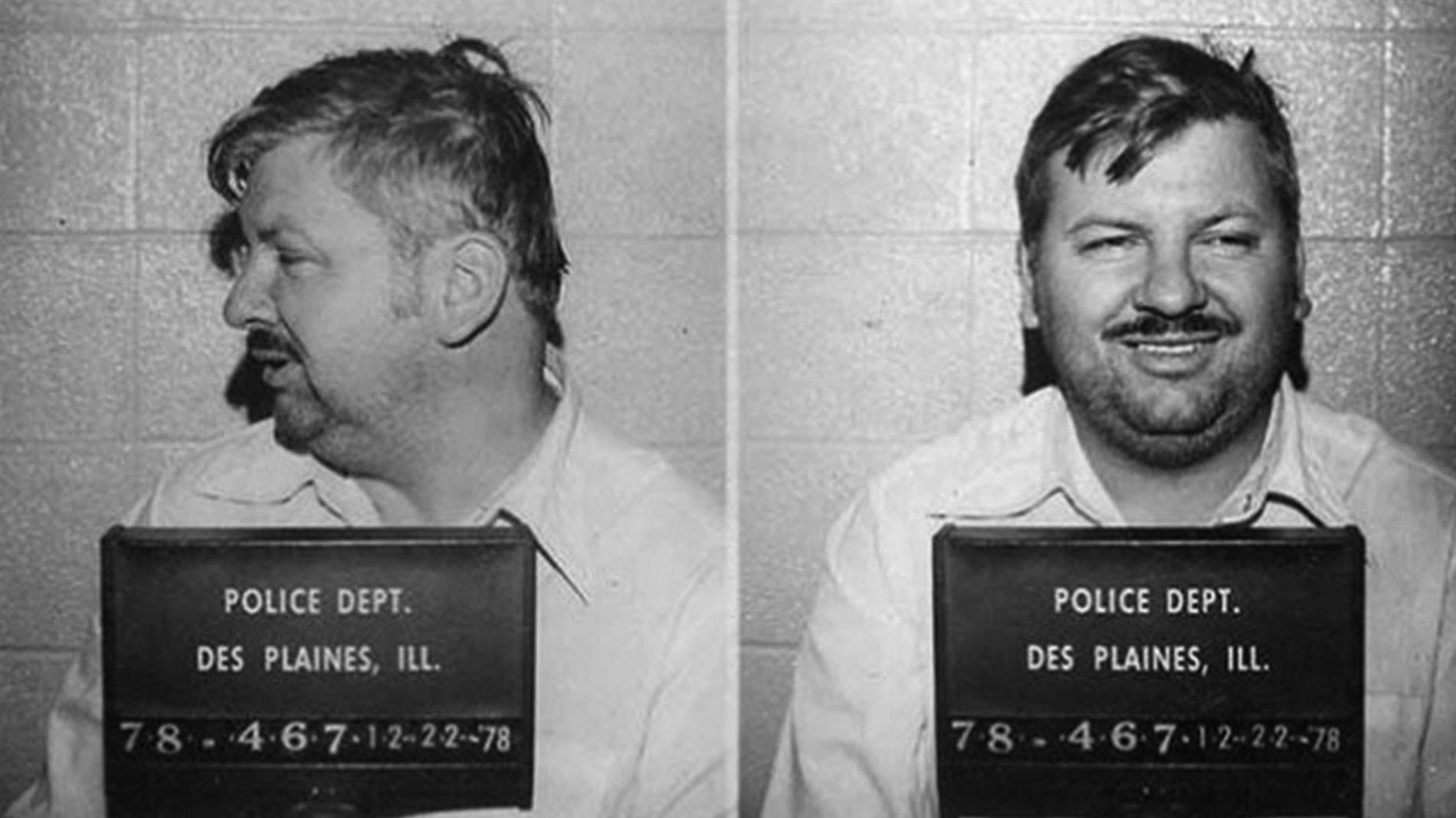
John Wayne Gacy filed numerous appeals in the years leading up to his execution.
John Wayne Gacy filed numerous appeals in the years leading up to his execution.
- Executed: May 10, 1994
- Means: lethal injection
Also known as the Killer Clown, this well-liked Chicago suburbanite lured teenage boys and young men to his home with promises of construction work, then sexually assaulted and sometimes killed them. He murdered at least 33 victims, often by strangulation, then hid the bodies under his house or dumped them in a nearby river. Gacy was sentenced to death and spent 14 years on death row before his execution.
William Bonin
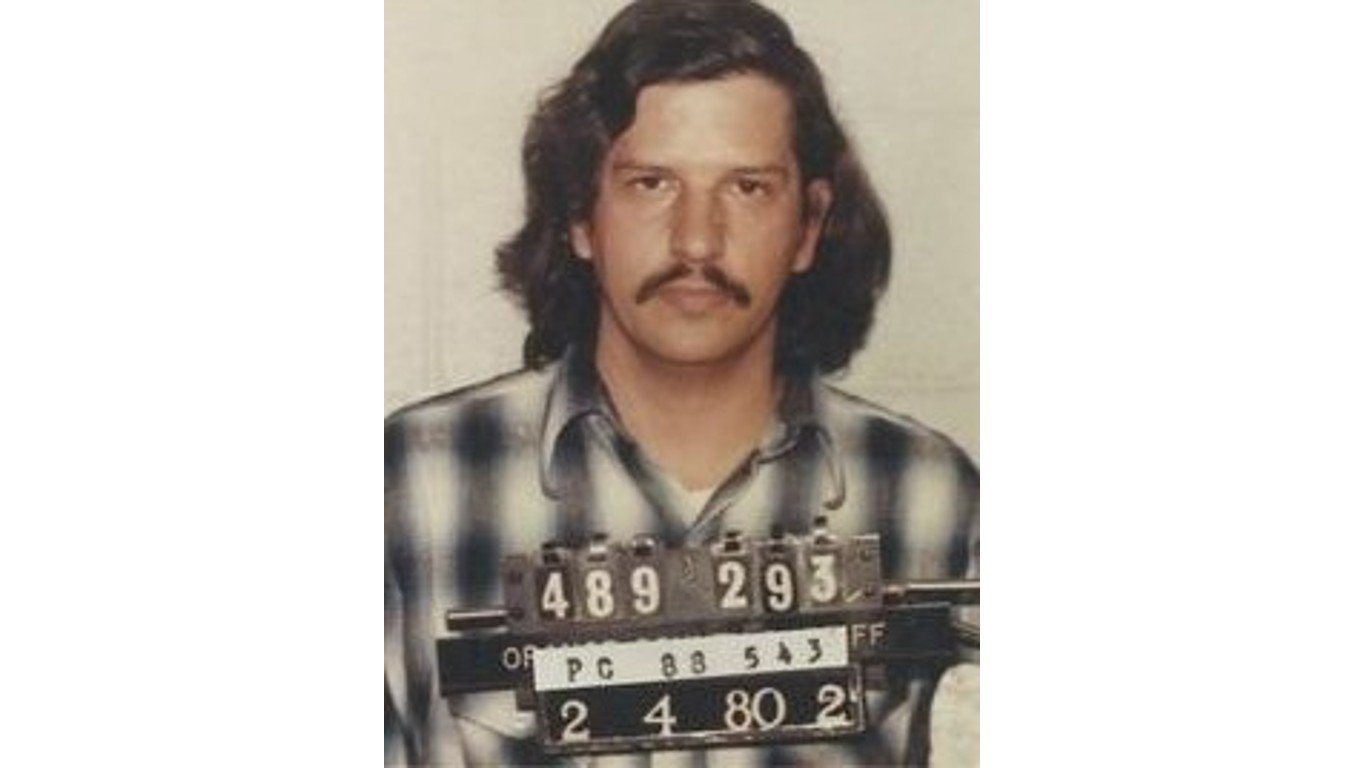
Convicted of 14 killings, William Bonin was suspected in over a dozen more murders.
Convicted of 14 killings, William Bonin was suspected in over a dozen more murders.
- Executed: February 23, 1996
- Means: lethal injection
Over the course of a year, William Bonin and two accomplices abducted, sodomized, beat, and strangled at least 14 teenage boys – and likely more – in Southern California. Bonin lured the victims into a van as they walked, biked, or hitchhiked, and their bodies were subsequently dumped along freeways, earning Bonin the moniker the Freeway Killer. He became the first California inmate to die by lethal injection.
Timothy McVeigh
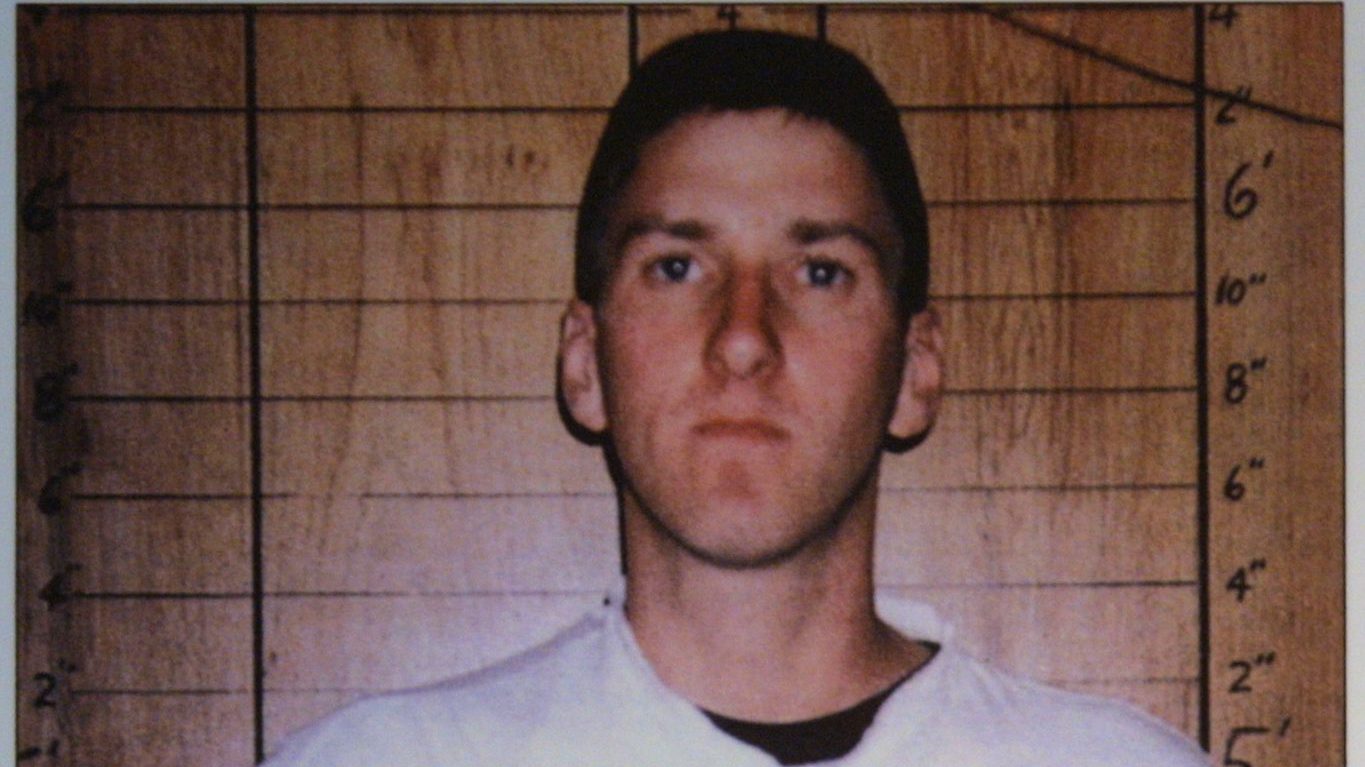
Timothy McVeigh expressed no remorse for his crime.
Timothy McVeigh expressed no remorse for his crime.
- Executed: June 11, 2001
- Means: lethal injection
Timothy McVeigh orchestrated the 1995 bombing of the Alfred P. Murrah Federal Building in Oklahoma City, which killed 168 people and injured over 600, marking the deadliest act of domestic terrorism in U.S. history. McVeigh, a decorated Army veteran turned anti-government extremist was seeking retribution for the 1993 ATF/FBI siege on the Branch Davidian compound in Waco, Texas. He was arrested shortly after the bombing, found guilty on all charges, and executed for the attack in 2001.
Aileen Wuornos

Serial killer Aileen Wuornos had a troubled childhood and attempted suicide numerous times as a teenager.
Serial killer Aileen Wuornos had a troubled childhood and attempted suicide numerous times as a teenager.
- Executed: October 9, 2002
- Means: lethal injection
Over the span of a year, Florida sex worker Aileen Wuornos robbed and murdered seven men that she claimed had tried to sexually assault her. Although her first victim had a prior rape conviction, her initial self defense plea failed and she was eventually convicted in six of the seven murders. Her story is dramatized in the film “Monster.”
Stanley Tookie Williams
Stanley Williams renounced gang life and wrote numerous children’s books against gang violence while incarcerated.
- Executed: December 13, 2005
- Means: lethal injection
Crips co-founder Stanley Tookie Williams was the leader of the Los Angeles gang during the ’70s, and was arrested and convicted on four counts of murder after a series of robberies. During his incarceration, Williams worked to reduce gang violence and was nominate for the Nobel Peace Prize. Despite a motion for clemency, as well as the public support of many activists, organizations, and celebrities, he was executed in 2005.
